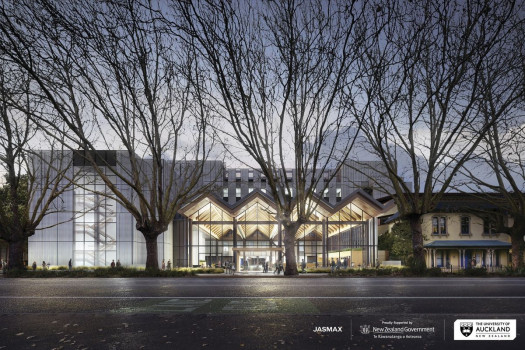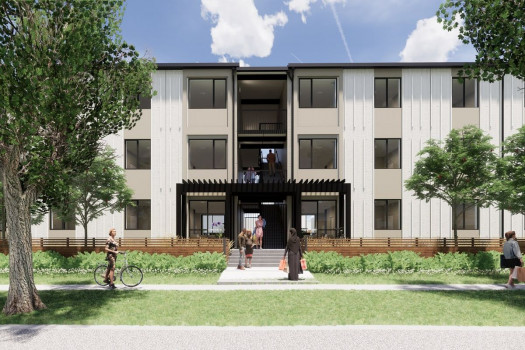How Indoor Climate Affects Timber Flooring?




You will find that most timber flooring manufacturers specify that the product may only be installed indoors and in a stable, maintained environment. This means that in order for the flooring to perform as designed, the temperature and humidity levels of your interior should be kept continuously within a certain range. This range may vary slightly depending on the manufacturer and type of timber flooring. We recommend a temperature between 15-27°C with a relative humidity between 35-80%.
So flooring needs a specific, consistent environment... but what happens when you don't give it one? Your timber flooring will react, just like our bodies do when we are subject to uncomfortable environmental conditions. If you neglect your floor for a short period of time it is usually pretty forgiving and will recover on its own once back in its comfortable climate. However If you continue to mistreat your floor or leave it out of its comfort zone for a long period, it may suffer irreversible damage. Damage caused by environmental conditions is not covered by warranty, and is entirely the homeowners responsibility.
Ideal temperature: 15-27°C | Dangerous temperatures: Above 30°C
Ideal relative humidity: 35-80% | Dangerous relative humidity: Above 90% / Below 25%
Top Situations that cause Climate Damage:
Leaving a Home Unattended for Long Periods of Time
When occupants go away for an extended period of time leaving their home locked up without any form of climate control - we also call this the lock & leave situation. Commonly occurs with holiday homes or homes that are only occupied at certain times of the year. It can happen either in summer where no allowance has been made to keep the home cool while unoccupied, or in winter where heating is left on while the home is unoccupied. In either scenario, temperatures can reach 30-45°C which can be extremely detrimental to timber flooring.
Excessive Heating or Cooling
This usually occurs as result of heating or cooling systems although can be caused by the climate outdoors, for example sun streaming in on a dark coloured floor can result in excessive heating. With heating and cooling systems, the type of system, the temperature you set them to and how long you have them running for, combined with climate conditions outdoors and ventilation capacity indoors can result in excessively humid or excessively drying conditions. Evaporative type air conditioning and gas type fireplaces can increase humidity, while refrigerated type air conditioning and wood burning fireplaces can reduce humidity. Underfloor heating is a common cause of damage especially if left on for too long or at a high temperature, as it heats the floor from close beneath causing it lose moisture and dry out. Air conditioning can have a drying or humidifying effect depending on the type, which is then magnified at prolonged use and/or extreme temperatures. Radiant heat sources such as fireplaces and heaters tend to dry out the surrounding area, for example the area of timber floor in front of a fireplace will be more greatly affected than the rest of the floor.
Too Much / Not Enough Ventilation
Heating with insufficient ventilation can result in high humidity, whereas too much ventilation in low humidity conditions can result in an excessively drying environment. Indoor humidity sources such as stovetop cooking, washing machines, dryers and showers should always be ventilated. Newer homes are often more humid as they are designed to retain heat and are very well sealed. Older homes are usually usually better ventilated as they often have drafts or cracks which allows fresh air inside.
Sudden Extreme Temperature Change
Usually occurs when occupants come home to a freezing cold house in winter and crank the heating right up to warm the home as quickly as possible. Sudden extreme temperature change can cause shrinkage and cracking and should be avoided at all costs. Solutions include keeping your house warm all the time by leaving heating on while out (taking care not to overheat), or turning off heating systems while out, then increasing the temperature gradually once you turn it on again. Even better if you can control your heating and cooling systems remotely!
Weather Conditions Outdoors
Aside from the aforementioned situation where sun streaming in on a dark coloured floor can result in excessive heating, it is relatively rare for weather conditions to be the sole cause of indoor climate conditions that are damaging to your floor. Very hot or very cold weather combined with any of the above factors can be very damaging.
Climate Damage - What does it Look Like?
Swelling/Expansion
When the humidity increases, timber flooring will swell and expand. This expansion is allowed for at the installation stage by leaving gaps around the perimeter of a floor, which are usually hidden by skirtings. If conditions become too humid; the flooring can expand beyond the allowed gaps, becoming too large for the area it has been laid in - which then forces it upwards. This results in the flooring lifting and buckling - not a pretty sight. Once the humidity goes back to normal, the flooring may shrink back, but it may be damaged around the edges where the boards were pushed into the walls. If the flooring was glued down, the lifting may have caused the product to become unstuck. In serious cases the flooring may need to be replaced altogether.
Common Causes:
- Excessive heating or cooling from air conditioning (evaporative type)
- Excessive heating from fireplace (gas type)
- Insufficient ventilation
- Hot or humid weather conditions outdoors
How to combat it:
- Only use air conditioning (evaporative type) or fireplace (gas type) when necessary
- Use a dehumidifier
- Leave doors open throughout the house to allow air to circulate
- Use exhaust fans in the laundry and bathrooms
- Open windows (only if outdoor conditions are within tolerance)
Shrinkage/Contraction
When the flooring becomes too dry it will shrink and contract and gaps may appear between the floorboards. In serious conditions, the boards themselves may split or crack - damage which is permanent. When the humidity is brought back to normal, the gaps between the boards will usually disappear.
Common Causes:
- Excessive heating or cooling from air conditioning (refrigerated type)
- Excessive heating from fireplace (wood burning type) or under floor heating
- Cold or dry weather conditions outdoors
How to combat it:
- Only use air conditioning (refrigerated type) when necessary
- Only use fireplace (wood burning type) or under floor heating when necessary
- Use a humidifier
- Introduce indoor living plants - they add moisture to the air
- Distribute shallow dishes of water throughout your home. These will evaporate, adding moisture to the air
How to Check Humidity Levels?
Look for signs
High humidity:
- Condensation on the inside of your windows
- Stains on ceilings and walls
- Mould and mildew growth
Low humidity:
- You or your family may experience sore throats and dry skin
Invest in a Hygrometer
This is an inexpensive gauge that tests the moisture content of the air. We highly recommend investing in one if you are concerned about caring for your timber floor. We recommend keeping it in an easily accessible place away from direct sunlight or drafts to ensure you get an accurate reading. Storing it on the wall beside the air conditioner remote is a good idea to help you remember to check it!
In summary - Your indoor climate has a huge effect on your timber flooring and it is imperative that you take precautions to protect it from extreme conditions otherwise it could sustain permanent damage. If you notice the climate or your timber floor changing, take action to control your indoor climate conditions - don't leave it until its too late. Remember, the conditions that are most comfortable for you are usually also ideal for your timber floors.




 Indonesia
Indonesia
 Australia
Australia
 Philippines
Philippines
 Hongkong
Hongkong
 Singapore
Singapore
 Malaysia
Malaysia







